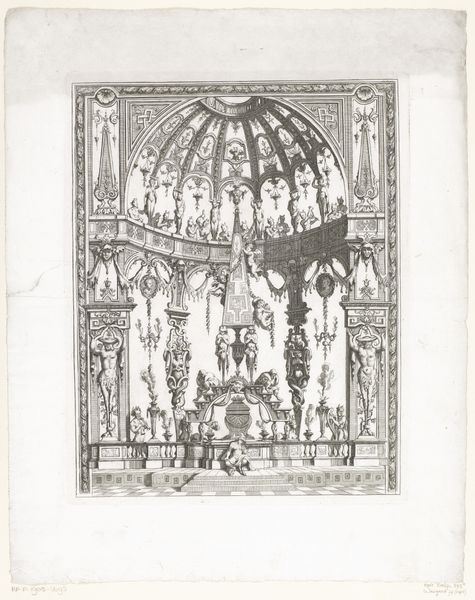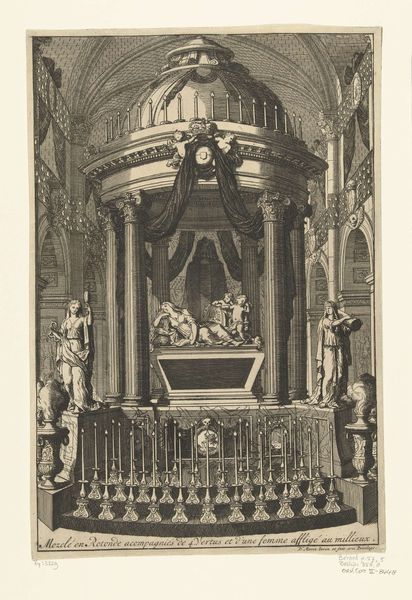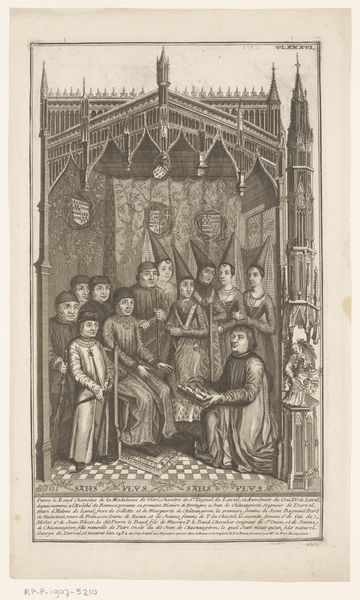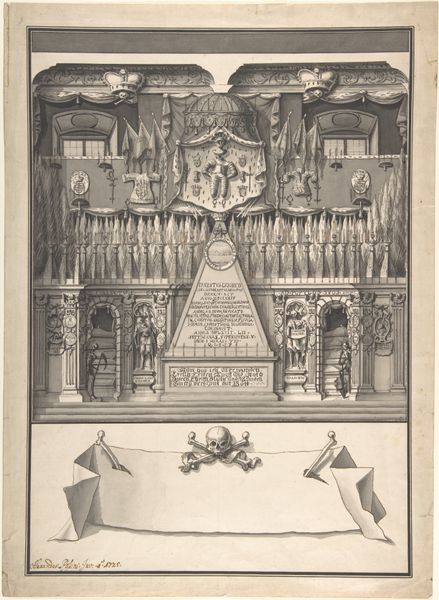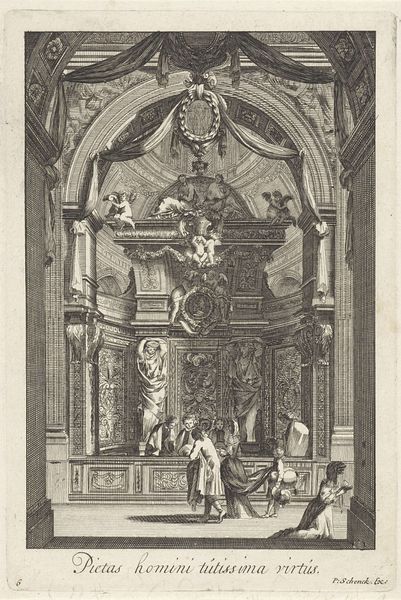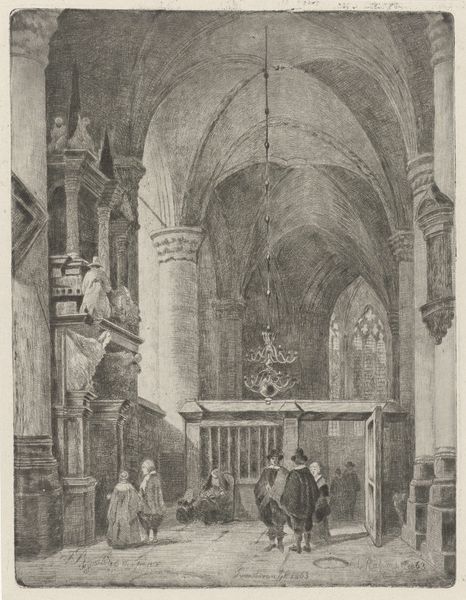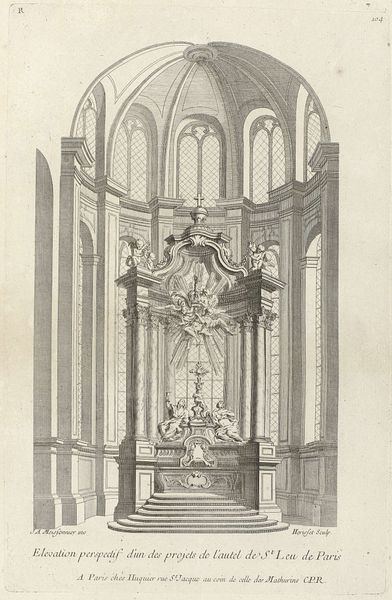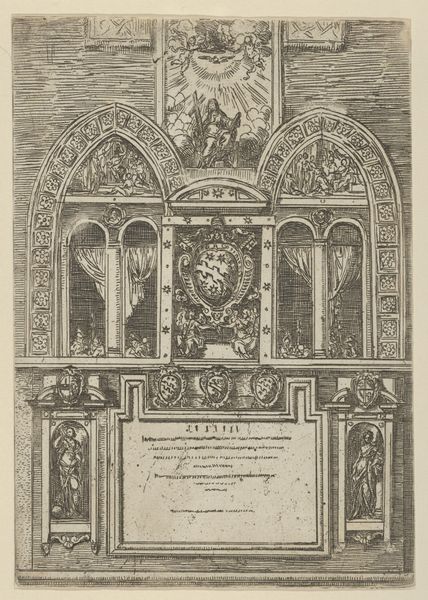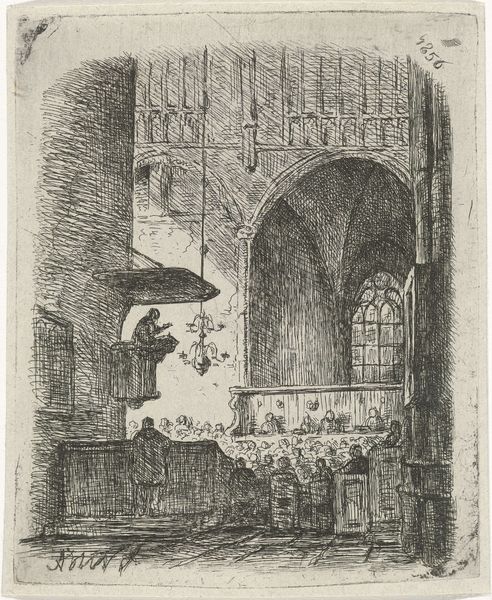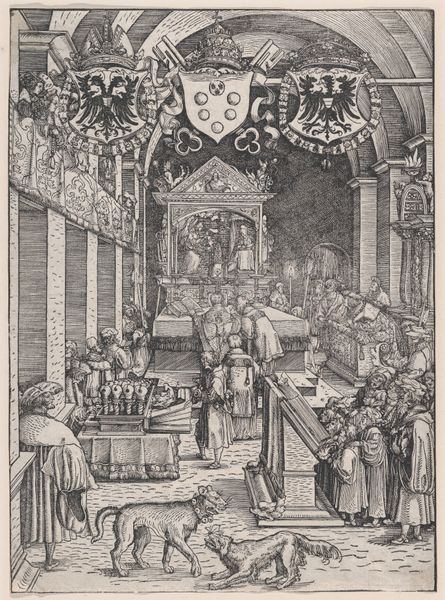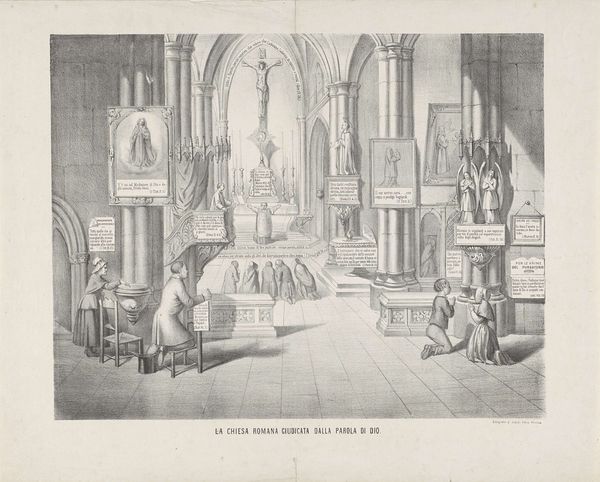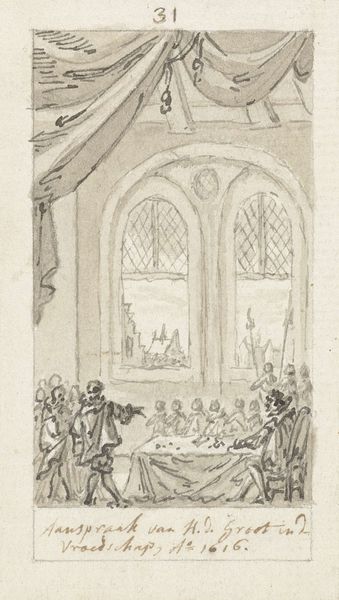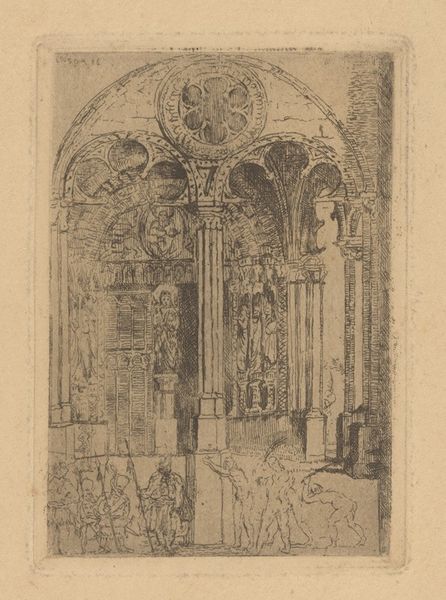
Xe Station. Jésus est dépouillé de ses Vêtements. L'emplacement de cette station est indique par la mosaïque en marbre que l'on voit devant l'autel. 1860
0:00
0:00
print, engraving
# print
#
perspective
#
figuration
#
cross
#
line
#
history-painting
#
italian-renaissance
#
engraving
Dimensions: Image: 10 1/16 × 7 13/16 in. (25.6 × 19.8 cm) Mount: 17 15/16 × 23 1/4 in. (45.5 × 59 cm)
Copyright: Public Domain
Louis de Clercq created this photograph of the Tenth Station of the Cross, depicting Jesus being stripped of his garments, sometime in the late 19th century. The image offers a glimpse into the visual culture surrounding religious pilgrimage in the 19th century, particularly in France. The photograph serves as a documentary record of a specific site of religious significance, and a tool for personal devotion. This was a period of intense social and political change in France, marked by the rise of secularism and the decline of traditional religious authority. In this context, the production and circulation of religious imagery served to reinforce Catholic identity. To truly understand this image, we might explore the history of religious tourism in the 19th century, the market for religious souvenirs, and the relationship between photography and religion. What institutions commissioned or collected such images? How might we understand the role of photography as either reinforcing or challenging religious norms? This photograph serves as a reminder that the meaning of art is always contingent on its historical context.
Comments
No comments
Be the first to comment and join the conversation on the ultimate creative platform.
